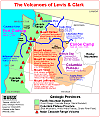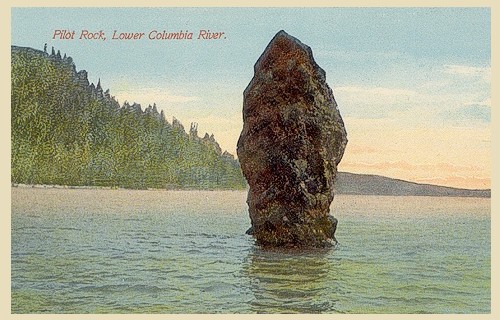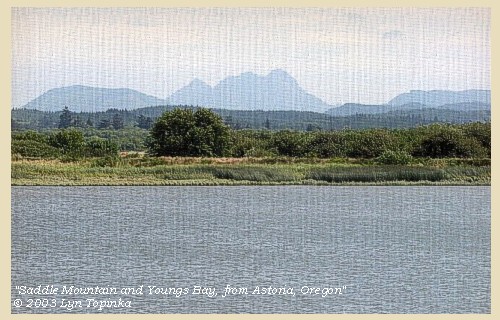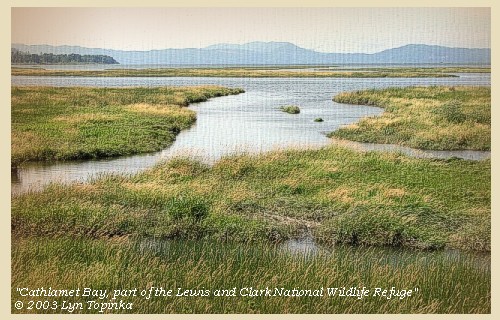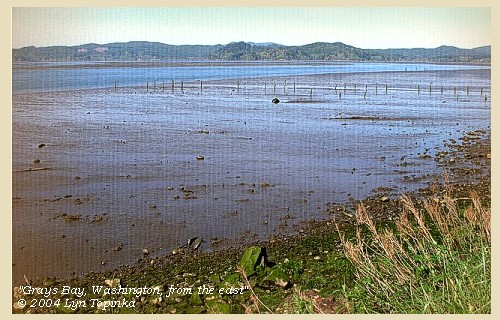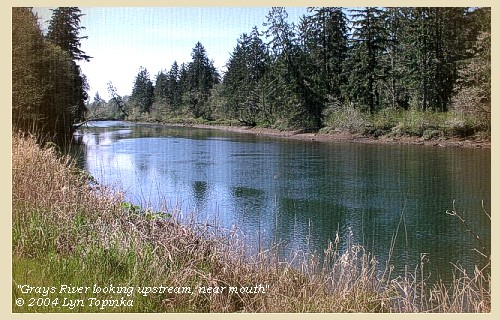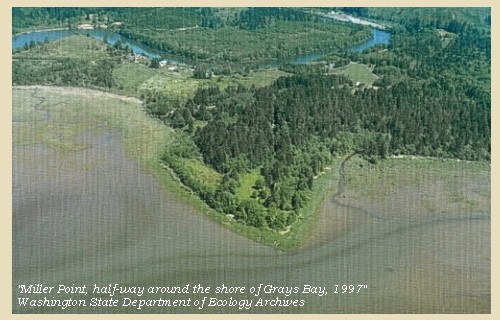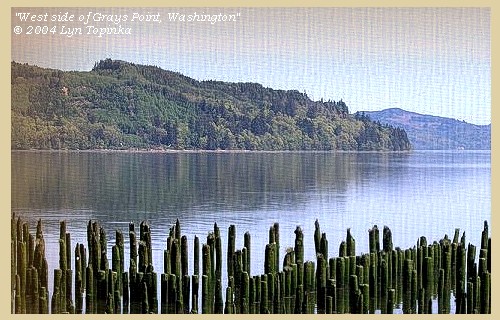The Volcanoes of
Lewis and Clark
Lewis and Clark
|
November 8 - 9, 1805 Nearing the Pacific - Pillar Rock to Grays Point |
|
Home
The Volcanoes of Lewis and Clark Map of the Journey Volcanoes, Basalt Plateaus, Major Rivers, etc. The Volcanoes Mount Adams, Mount Hood, Mount Jefferson, Mount Rainier, and Mount St. Helens CALENDAR of the Journey October 1805 to June 1806 Along the Journey Pacific Northwest Maps - Columbia River, Volcanoes, Flood Basalts, Missoula Floods, Geology, etc. The Corps of Discovery The Journey of Lewis and Clark About the Reference Materials The Journals, Biddle/Allen, DeVoto, Gass, Moulton, Topo Maps, and others USGS Lewis and Clark Links Links to USGS Websites highlighting the Lewis and Clark Journey Resources Publications Referenced and Websites Visited |
PREVIOUS
November 7 Nearing the Pacific, Wallace Island to Pillar Rock |
November 8-9
Nearing the Pacific, Pillar Rock to Grays Point Pillar Rock, Coast Range, Saddle Mountain, Lewis and Clark NWR, Grays Bay, Deep River and Grays River, Miller Point, and Gray's Point |
CONTINUE
November 10-11 Nearing the Pacific, Grays Point to Hungry Harbor |
|
To the Pacific - November 1805
Nearing the Pacific - Pillar Rock to Grays Point |
| Lewis and Clark's camp of of November 7, 1805 was opposite Pillar Rock, between Brookfield and Dahlia, Washington, west of Jim Crow Point. |
| Friday, November 8, 1805 |
| It rained this morning; and having changed the clothing which had been wet during yesterday's rain, we did not set out till nine o'clock. Immediately opposite our camp is a rock [Pillar Rock] at the distance of a mile in the river, about twenty feet in diameter and fifty in height, |
| and towards the southwest some high mountains [Coast Range]., |
|
|
|
Coast Range:
The Coast Ranges, which border the entire west coast of the United States from the Olympic Peninsula south to Mexico, vary greatly in both rock type and climate. Upper Mesozoic and Tertiary sedimentary rocks predominate, although intrusive and metamorphic rocks are also present. Most rocks have been folded, faulted, and in places intensely sheared; many of the Tertiary rocks are poorly consolidated. Topography is mountainous, with steep slopes and intervening flat valleys. Precipitation in the Coast Ranges is seasonal, ranging from very wet in parts of the northern ranges to semiarid in the south, with periodic storms accompanied by intense rainfall. The combination of steep slopes, soft, sheared rocks, and periods of heavy precipitation makes this subdivision, particularly in California, one of the most landslide prone areas of the United States. Tectonic melange, especially that of the Franciscan assemblage, is especially slide prone; landslides on natural slopes are common in all three categories of slide, fall, and flow. Debris flows during rainstorms are a particular hazard in southern California, where much of the area is heavily developed, so that many landslides have been artificially activated. The Coast Ranges are seismically active, and earthquakes have triggered many landslides. -- Radbruch-Hall, et.al., 1982, USGS Professional Paper 1183 |
| one of which is covered with snow at the top [Saddle Mountain]. |
| We proceeded past several low islands in the bay or bend of the river to the left [today's Lewis and Clark National Wildlife Refuge], which is here five or six miles wide. |
| We were here overtaken by three Indians in a canoe who had salmon to sell. On the right side we passed an old village, and then, at the distance of three miles, entered an inlet or niche about six miles across [Grays Bay], |
| and making a deep bend of nearly five miles into the hills on the right shore, where it receives the waters of several creeks [Deep River (west) and Grays River (east) being the two largest]. |
| We coasted along this inlet [Grays Bay], which, from its little depth, we called Shallow bay, and at the bottom of it halted to dine near the remains of an old village [Miller Point], from which, however, we kept at a cautious distance, as it was occupied by great numbers of fleas. ...... |
| After dinner the three Indians left us, and we then took advantage of the returning tide, to go on about three miles to a point on the right [Grays Point], eight miles distant from our camp; but here the waves ran so high, and dashed about our canoes so much, that several of the men became seasick. It was therefore judged imprudent to go on in the present state of weather, and we landed at the point [Grays Point]. |
| The situation was extremely uncomfortable; the high hills jutted in so closely that there was not room for us to lie level, nor to secure our baggage free from the tide; and the water of the river is to salt to be used; but the waves increasing every moment so much, that we could not move from the spot with safety: we therefore fixed ourselves on the beach left by the ebb-tide, and having raised the baggage on poles, passed a disagreeable night, the rain during the day having wet us completely, as indeed we have been for some days past. |
|
|
|
The Camp - November 8 and November 9, 1805:
Washington side of the Columbia River, west side of Grays Bay, at a place now called "Grays Point". |
Saturday, November 9, 1805
| Fortunately for us, the tide did not rise as high as our camp during the night; but being accompanied by high winds from the south, the canoes, which we could not place beyond its reach, were filled with water, and were saved with much difficulty: our position was very uncomfortable, but as it was impossible to move from it, we waited for a change of weather. It rained, however, during the whole day, and at two o'clock in the afternoon, the flood tide set in, accompanied by a high wind from the south, which, about four o'clock, shifted to the southwest, and blew almost a gale directly from the sea. The immense waves now broke over the place where we were encamped, and the large trees, some of them five or six feet thick, which had lodged at the point, were drifted over our camp, and the utmost vigilance of every man could scarcely save our canoes from being crushed to pieces. We remained in the water and drenched with rain during the rest of the day; our only food being some dried fish, and some rain-water which we caught. Yet, though wet and cold, and some of them sick from using the salt-water, the men are cheerful, and full of anxiety to see more of the ocean. The rain continued all night ...... |
|
|
|
The Camp - November 8 and November 9, 1805:
Washington side of the Columbia River, west side of Grays Bay, at a place now called "Grays Point". |
| Home | Previous | Continue |
If you have questions or comments please contact: GS-CVO-WEB@usgs.gov
June/July 2004, Lyn Topinka
The Volcanoes of Lewis and Clark Home Page | CVO Home Page

